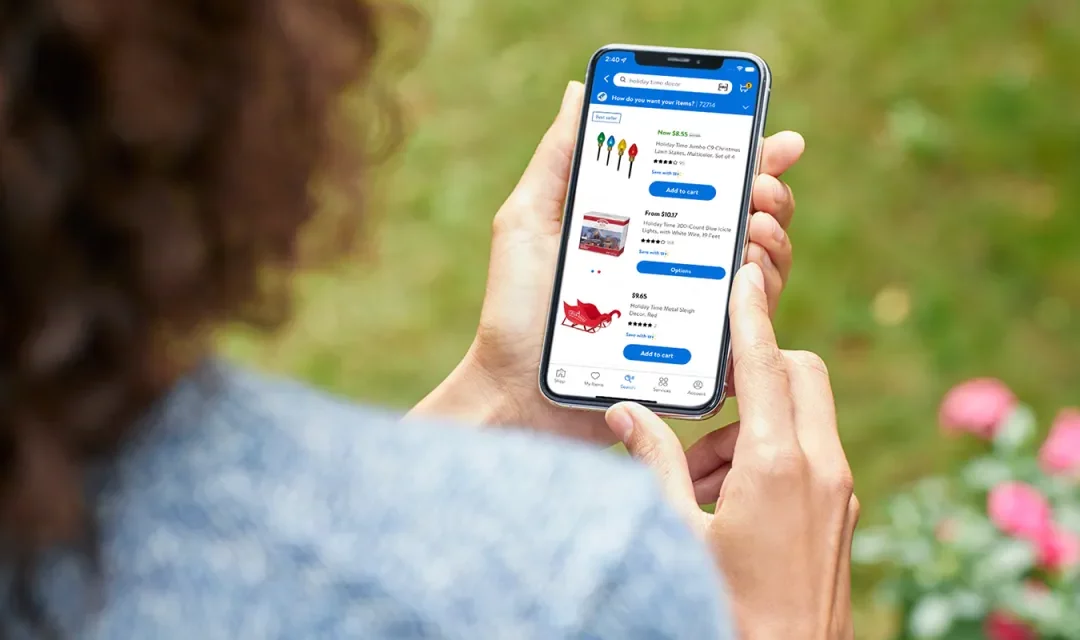Walmart launched Walmart Data Ventures almost four years ago to capitalize on its consumer and inventory data.
It developed the Walmart Luminate platform to help both the retailer and its suppliers better understand how customers purchase and how items move through its network.
Now, the firm has great aspirations to extend its data platform, and significant CPG companies are checking it out, enthusiastic about how they might utilize the results.
READ MORE: Microsoft Teases Lifelike Avatar AI Technology But Provides No Release Date
Walmart Luminate has enabled suppliers and brands to see data such as sales numbers, inventory levels, shopping trends, and findings from consumer impression surveys. This year, the platform launched Insights Activation, a tool that works with Walmart’s retail media network, Walmart Connect, to create media plans based on Walmart Luminate data.

Mark Hardy, svp of Walmart Data Ventures, told Modern Retail that Insights Activation is the first step toward what Walmart intends to do with Walmart Luminate in the future: provide not only data points but also recommendations to suppliers and merchants, particularly through the use of artificial intelligence. As part of this strategy for the platform’s future, Walmart will rebrand Walmart Luminate as Scintilla next year, as revealed in October.
“When you hear about creating value from Walmart’s data, people immediately jump to monetization and ask, ‘So you’re selling data?'” “The answer is not really,” Hardy said. “What we are doing is we’re looking at how do we take Walmart’s data and create value from it, through products, through being able to drive business.”
“Up to now, all the data we have gave you a gauge of ‘How did I do?'” Hardy stated. “I could look at my sales and my customers, but only after I’d taken action. Where we want to go is to be able to connect the dots for all of that data and make suggestions on ‘What should I do?’.”

Having a consistent set of data across the retailer, suppliers, and ad network may be extremely beneficial for marketers, according to Andrew Lipsman, an independent analyst at Media, Ads + Commerce.
“I think I look at Luminate or Scintilla broadly as a marketing tool, and that’s everything from understanding marketing insights, things like category market share to different audiences or customer profiles who consume different products or categories,” Lipsman told me. “And then that information can be leveraged to activate marketing or advertising strategies.”
Unlike Luminate, Scintilla will not be preceded by the “Walmart” moniker; the platform started expanding outside of the United States to Canada and Mexico this year, and the corporation wanted a brand that would be relevant in areas where the company operates under other store names.
READ MORE: YouTube’s New AI Tools Assist Brands In Aligning Ads With Cultural Moments
Hardy said that the new moniker is also related to the objective of being able to make suggestions using artificial intelligence.
“[Scintilla] also means ‘a small amount,’ which captured the whole idea that from the smallest insights, big ideas can be ignited,” Hardy told the audience. “So we thought that was a perfect alignment in terms of our value proposition and our legacy, along with the future of where we are going to go.”

Another example is a feature that will utilize AI to comprehend what’s on the shelf and correlate that information with supply chain data, providing the firm and suppliers a better sense of whether additional goods needs to be delivered to the shop.
“When we look at this, we don’t see it as a destination, but rather as a continuous journey,” Hardy told the crowd. “So we will continue to add as we uncover possibilities to improve visibility in the product’s or customer’s journey. We are continually developing and bringing new products to market that will provide that viewpoint.”
Walmart Luminate’s clients include the firms that own some of the most well-known brands in the aisles.
“Everybody’s experiencing the same thing today and trying to find growth, and we need to use every tool that we can to help us identify potential growth opportunities and remain the leader,” said Jeffrey Hendrix, vp of customer for Bimbo Bakeries (which includes Sara Lee, Thomas’ Bagels, and Ball Park buns). “Otherwise, we’re going to fall asleep at the wheel.”
According to Hendrix, the platform provides the corporation with both fresh insights and confirmation of existing beliefs. For example, Bimbo utilized Luminate survey data to determine that new consumers preferred flavored bagels over plain bagels, which prompted Bimbo to consider how it might improve its morning offerings.
“These are the corners that need sweeping to help suppliers like us figure out where we can go find the growth,” says Hendrix.

Lipsman said that Walmart and Kroger, who use a similar data platform called 84.51, are in a unique position since they have such enormous sales channels to monetize their data as a commodity for advertising. “I don’t know that that’s going to be the case for every retailer,” he told me. “It’s probably going to mostly be the domain of the biggest players in grocery and maybe category leaders in some other retail segments.”
According to Kris McDermott, director of omnichannel marketing at Kimberly-Clark, many CPG firms first jumped on Walmart Luminate since the retailer’s first-party data was unparalleled.
McDermott believes it will establish a new standard for the kind of omnichannel intelligence brands demand from retailers. “There isn’t anything quite like this,” McDermott said. “Obviously, Amazon has an enormous amount of site data they give you, but the omnichannel world is so much more complex, and trying to combine that with in-store availability and assortment information is really complicated; so that’s very clearly the bet that Walmart is making.”
Radiant TV, offering to elevate your entertainment game! Movies, TV series, exclusive interviews, music, and more—download now on various devices, including iPhones, Androids, smart TVs, Apple TV, Fire Stick, and more.


